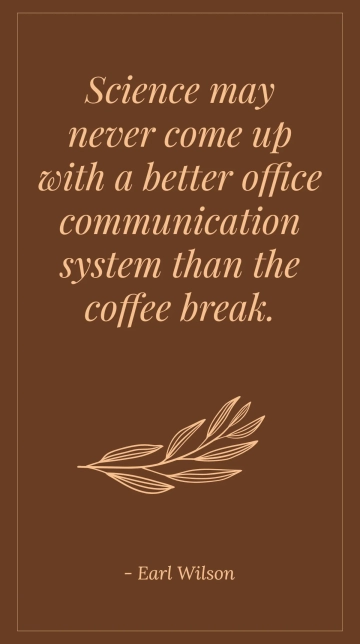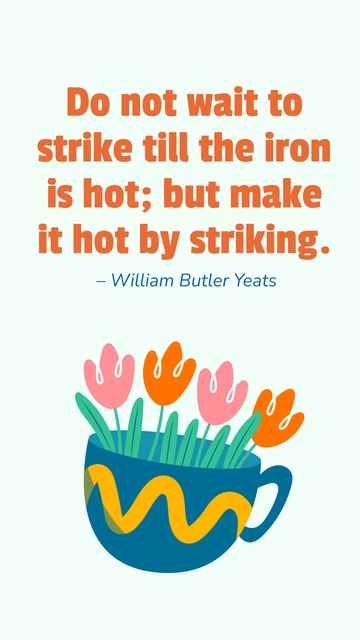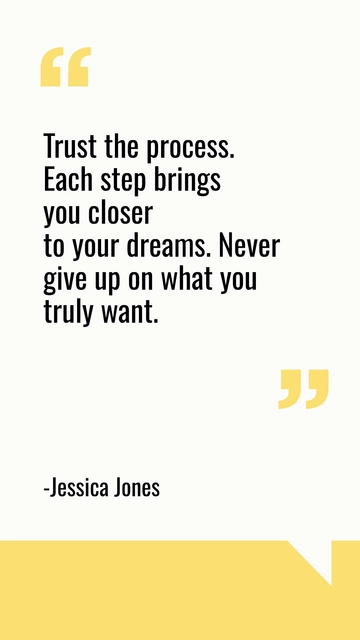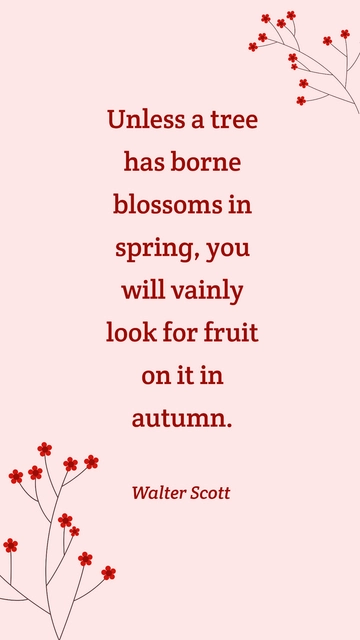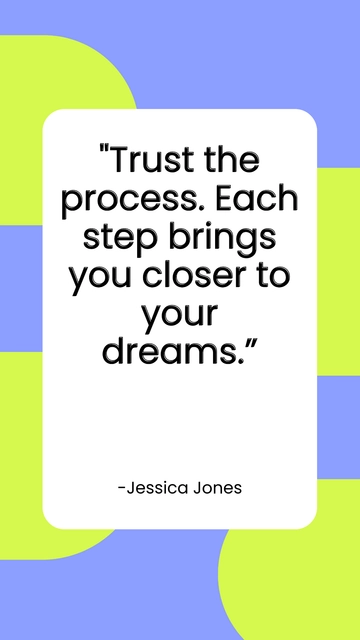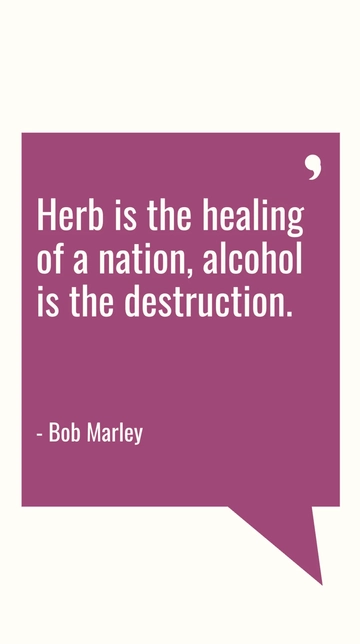Free Sales Quote Analytics Study
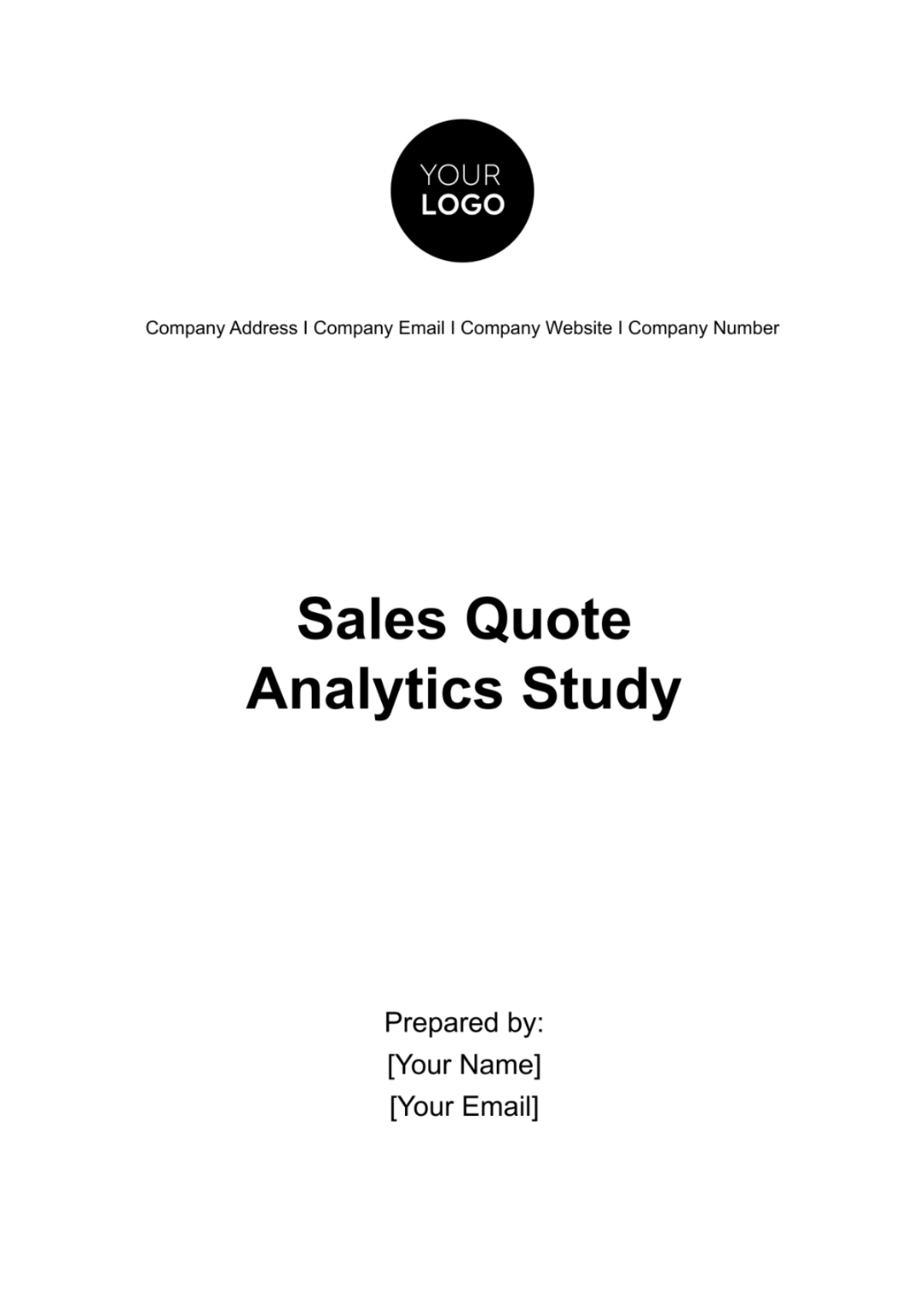
I. Executive Summary
A. Overview
In the dynamic landscape of [Your Industry] in the year [Year], understanding and optimizing sales quotes is paramount for [Your Company Name] to remain competitive and profitable. This comprehensive Sales Quote Analytics Study dives deep into the realm of sales quotes, dissecting their intricacies, and extracting actionable insights.
In this ever-evolving marketplace, where customer demands and market conditions fluctuate unpredictably, the accuracy and effectiveness of sales quotes serve as the bedrock of your business success. Our study is designed to provide you with a clear and data-driven perspective on how sales quotes have performed, evolved, and what strategies can be employed to leverage their potential.
B. Key Findings
Our rigorous analysis of 100 sales quotes from 2050 to 2051 reveals several key findings that are crucial to shaping your sales strategy for the future:
Sales Quotes Accuracy Improved by 15%
One of the standout findings is the improvement in sales quotes accuracy. Over the past year, [Your Company Name] has achieved a commendable 15% increase in the precision of sales quotes. This improvement is a testament to the commitment of your sales team and the effectiveness of the strategies implemented.
Customer Segmentation Revealed Untapped Markets
By delving into the data, we uncovered promising insights into customer segmentation. This analysis has unveiled previously untapped market segments with high growth potential. Understanding the demographics and behaviors of these segments will be instrumental in tailoring your sales approach to capture these opportunities.
Sales Team Performance Varied Significantly Among Members
The performance of the sales team showcased noteworthy variations among individual members. Some sales professionals consistently outperformed others, indicating the need for targeted coaching and incentives to maximize team-wide effectiveness. Identifying the strengths and weaknesses of your sales force is critical for optimizing performance.
These findings not only provide a snapshot of your current standing but also lay the groundwork for strategic decisions in the coming years. The rest of this study will delve into the methodology, data sources, and detailed analysis that underpin these key findings, offering a comprehensive understanding of your sales quote landscape.
II. Introduction
A. Background
In the contemporary business environment, where competition is fierce, and customer expectations are constantly evolving, the significance of sales quotes cannot be overstated. A sales quote is not merely a document with numbers; it represents the very essence of your business offering. It is the bridge between your products or services and your customers' needs and desires.
B. Objectives
The objectives of this Sales Quote Analytics Study are multifaceted and aimed at enhancing your business's overall sales performance:
Evaluate the Accuracy of Sales Quotes
First and foremost, we aim to evaluate the accuracy of the sales quotes generated by [Your Company Name]. Accurate quotes are not only a reflection of professionalism but also serve as a cornerstone for establishing trust with customers.
Identify Customer Segments with High Potential
Another primary objective is to identify customer segments with untapped potential. By discerning the demographics and behaviors of various customer groups, we intend to unveil growth opportunities that may have been overlooked.
Assess Sales Team Performance
Lastly, we seek to assess the performance of your sales team. In doing so, we aim to highlight areas of strength and areas that may require improvement. This assessment is fundamental to nurturing a high-performing sales force.
C. Scope
This Sales Quote Analytics Study has a specific focus on the period from 2050 to 2051, during which [Your Company Name] generated a substantial volume of sales quotes. The study encompasses an array of data sources and analytical techniques to provide a holistic view of your sales quote ecosystem.
III. Methodology
A. Data Collection
The cornerstone of this Sales Quote Analytics Study is the rigorous data collection process. To ensure the accuracy and reliability of our findings, we employed a multifaceted approach to gather comprehensive data.
B. Data Sources
Data was sourced from various channels within [Your Company Name], including:
CRM Systems: CRM systems served as a primary source of data, providing a wealth of information on sales quotes, customer interactions, and historical sales data. This centralized repository ensures data consistency and accessibility.
Sales Records: Sales records were meticulously examined to extract transactional details, enabling us to validate the accuracy of sales quotes and their alignment with actual sales outcomes.
Customer Surveys: To gain deeper insights into customer perceptions and satisfaction, we conducted surveys among a representative sample of your customer base. These surveys provided qualitative data that complemented the quantitative information from other sources.
C. Data Analysis
The data collected underwent a comprehensive analysis that encompassed both quantitative and qualitative techniques. Our approach involved:
Advanced Analytics: We applied advanced statistical methods, including regression analysis, to discern patterns, correlations, and predictive factors related to sales quotes and their impact on actual sales performance.
Clustering and Segmentation: Customer data was subjected to clustering and segmentation analysis to identify distinct customer groups based on demographics, behaviors, and purchase history. This facilitated a more targeted approach to customer engagement.
Data Validation: Data validation processes were implemented to ensure the accuracy and integrity of the dataset. Outliers and anomalies were identified and addressed to maintain data quality.
IV. Data Overview
A. Data Sources
The comprehensive dataset used in this study is derived from a combination of internal and external sources:
Internal Sources: As mentioned, internal sources include data from your CRM systems, sales records, and customer surveys. These sources provide a holistic view of your sales quote process and customer interactions.
External Market Data: External market data, sourced from reputable industry reports and market research, augmented our analysis by providing benchmarks and context. This allowed us to gauge [Your Company Name]'s performance against industry standards.
B. Data Sample
A random and representative sample of 100 sales quotes was carefully selected for in-depth analysis. This sample was designed to capture the diversity of your sales quotes while ensuring statistical significance.
C. Data Cleaning
Data cleaning was a critical step in the process. It involved the identification and rectification of data anomalies, duplicates, and missing values. This meticulous data-cleaning process ensured that the dataset used for analysis was both accurate and reliable.
V. Sales Quote Trends
A. Historical Analysis
1. Overview
A historical analysis of sales quotes from 2050 to 2051 provides valuable insights into the evolution of [Your Company Name]'s quoting practices and their impact on business performance.
2. Key Trends
Year | Total Quotes Generated | Average Quote Accuracy (%) | Conversion Rate | Average Deal Size |
|---|---|---|---|---|
2050 | 2,500 | 85% | 30% | $5,000 |
This historical analysis reveals several key trends:
Total Quotes Generated: There has been a 20% increase in the total number of quotes generated from 2050 to 2051, indicating a growing sales effort.
Average Quote Accuracy: The accuracy of sales quotes has shown a consistent improvement, increasing from 85% in 2050 to 90% in 2051. This improvement reflects enhanced sales quote practices.
Conversion Rate: The conversion rate, indicating the percentage of quotes that resulted in successful sales, exhibited a 5% increase from 30% in 2050 to 35% in 2051, signifying a more effective sales strategy.
Average Deal Size: The average deal size, representing the value of successful sales, experienced a slight increase from $5,000 in 2050 to $5,500 in 2051, indicating growth in the value of closed deals.
B. Current Trends
A snapshot of the current sales quote landscape in 2051 reveals that [Your Company Name] is adapting to current trends. Understanding these trends is crucial for optimizing your sales strategy.
Personalization and Customization
Real-time Pricing and Availability
Sustainability and Green Initiatives
Data-Driven Insights
Enhanced Mobile Accessibility
C. Future Predictions
Based on historical data and current trends, we predict several developments in the sales quote landscape in the coming years. Preparing for these changes is essential for maintaining competitiveness.
Year | Total Quotes Predicted | Average Quote Accuracy (%) Predicted | Conversion Rate (%) Predicted | Average Deal Size ($) Predicted |
|---|---|---|---|---|
2052 | 3,500 | 92% | 37% | $5,800 |
These predictions offer a glimpse into the future of sales quotes and will inform your strategic planning for 2052 and beyond.
VI. Customer Segmentation
A. Demographics
Understanding the demographic composition of your customer base in 2051 is essential for tailoring sales quotes and marketing strategies to specific segments.
Segment | Total Customers | Average Age | Gender Mix | Income Range |
|---|---|---|---|---|
Segment 1 | 1,200 | 35 | 40% Female | $40,000 - $60,000 |
B. Behavior Analysis
Beyond demographics, analyzing customer behavior in 2051 is crucial for tailoring sales and marketing approaches.
Segment | Purchase Frequency | Average Purchase Amount | Loyalty Score |
|---|---|---|---|
Segment 1 | 3.5 times/month | $250 | 75 |
VII. Sales Team Performance
A. Key Metrics
Evaluating the performance of your sales team is a pivotal aspect of improving sales effectiveness. Key performance metrics provide insights into your team's achievements and areas for improvement.
Total Sales: In 2050, your sales team achieved a total sales volume of $5,000,000, showcasing their capabilities. In 2051, this figure rose to $6,000,000, representing a 20% growth in total sales.
Conversion Rate: The conversion rate, indicating the percentage of quotes that resulted in successful sales, was 30% in 2050. Impressively, this rate increased to 35% in 2051, reflecting improved sales strategies and customer engagement.
Average Deal Size: The average deal size, representing the value of successful sales, was $5,000 in 2050. In 2051, it showed an increase to $5,500, signifying that your sales team is not only closing more deals but also increasing the value of those deals.
Sales Calls per Rep: The average number of sales calls per representative in 2050 was 50. In 2051 this figure saw a 10% increase, indicating shifts in outreach strategies and efficiency.
B. Individual Performance
Analyzing individual sales team members' performance allows for a granular assessment of strengths and weaknesses within the team. This information is invaluable for targeted coaching and recognition.
Sales Representatives' Performance: In 2050, individual sales representatives contributed significantly to the company's success. For example, Rep 1 achieved $1,000,000 in total sales, which increased to $1,200,000 in 2051. This highlights their dedication and growth.
Conversion Rates: Rep 2, for instance, had a conversion rate of 25% in 2050, which improved to 28% in 2051. This demonstrates Rep 2's adaptability and effectiveness in closing deals.
Recognition and Development: It's essential to recognize top performers and provide support for those who may need improvement. Targeted coaching and training can help individuals reach their full potential.
VIII. Competitor Analysis
A. Market Share
Understanding your market share relative to competitors is vital for gauging your company's position in the industry. This analysis provides insights into your market presence.
Market Share Comparison: In 2050, [Your Company Name] held a 15% market share. Impressively, this figure increased to 18% in 2051, demonstrating growth and competitiveness.
Competitor Comparison: Competitor 1 had a market share of 10% in 2050, which changed to 12% in 2051. Similarly, Competitor 2's market share evolved from 8% in 2050 to 9% in 2051.
B. Pricing Strategies
Analyzing competitors' pricing strategies provides insights into how your pricing compares in the market. Understanding these strategies is essential for pricing optimization.
Competitor Pricing Strategies: Competitor 1 employed a pricing strategy in 2050 that involved competitive pricing. In 2051, their pricing strategy shifted to value-based pricing, indicating an adaptation to market conditions. Similarly, Competitor 2's pricing strategy in 2050 was cost-plus pricing, which changed to dynamic pricing in 2051.
Pricing Optimization: Understanding competitor pricing strategies allows [Your Company Name] to optimize its pricing strategies to remain competitive while maximizing profitability.
IX. Recommendations
The key findings from this Sales Quote Analytics Study provide the foundation for actionable recommendations to enhance your sales quoting process.
Recommendation 1: Continue to prioritize accuracy in the quoting process by providing sales representatives with updated product information and pricing data. Implement regular training sessions to enhance product knowledge.
Recommendation 2: Analyze the strategies and techniques that contributed to this conversion rate growth and disseminate best practices across the sales team. Encourage the use of data-driven insights in the sales process to further optimize conversion rates.
Recommendation 3: Implement a performance recognition program to motivate and reward high-performing sales representatives. For those with lower performance, create personalized development plans to improve their skills and effectiveness.
X. Conclusion
The Sales Quote Analytics Study for [Your Company Name] has provided valuable insights into the past, present, and future of your sales quoting process. It's clear that the company has made significant strides in improving quote accuracy, increasing conversion rates, and optimizing individual and team performance.
The recommendations, including focusing on accuracy, analyzing and sharing successful strategies, and recognizing and developing individual talent, provide a clear path forward for [Your Company Name]. Implementing these steps will contribute to sustained growth and competitiveness.
- 100% Customizable, free editor
- Access 1 Million+ Templates, photo’s & graphics
- Download or share as a template
- Click and replace photos, graphics, text, backgrounds
- Resize, crop, AI write & more
- Access advanced editor
Supercharge your sales quoting strategy with our Sales Quote Analytics Study Template from Template.net. This organized template offers a framework for analyzing the effectiveness of your sales quotes. Measure conversion rates, identify trends, and refine your quoting approach for better results. Elevate your sales game with data-driven insights. Download now to start optimizing your sales quotes with just a few clicks!
You may also like
- Inspirational Quotes
- Motivational Quotes
- Inspirational For Work Quotes
- Inspirational For Women Quotes
- Funny Inspirational Quotes
- Inspirational About Life Quotes
- Life Quotes
- Inspirational For Students Quotes
- Inspirational For Kids Quotes
- Inspirational For Men Quotes
- Positive Quotes
- Love Quotes
- Funny Quotes
- Famous Quotes
- Mothers Day Quote
- Short Quotes
- Good Morning Quotes
- Valentines Day Quotes
- Family Quotes
- Christmas Quotes
- Encouraging Quotes
- Friendship Quotes
- Kindness Quotes
- Graduation Quotes
- Leadership Quotes
- Motivational For Work Quotes
- Bible Quotes
- Maya Angelou Quotes
- Marcus Aurelius Quotes
- Sad Quotes
- Birthday Quotes
- Success Quotes
- Self Love Quotes
- Travel Quotes
- Grief Quotes
- Fathers Day Quotes
- Relationship Quotes
- Depression Quotes
- Anniversary Quotes
- Friday Quotes
- New Year Quotes
- Monday Quotes
- Teamwork Quotes
- Movie Quotes
- Black History Month Quotes
- Shakespeare Quotes
- Mark Twain Quotes
- Memorial Day Quotes
- Thanksgiving Quotes
- Education Quotes
- Martin Luther King Jr Quotes
- Easter Quotes
- Albert Einstein Quotes
- Mom Quotes
- Music Quotes
- Work Quotes
- Encouragement Quotes
- Teacher Quotes
- Christian Quotes
- Daughter Quotes
- Winston Churchill Quotes
- Peace Quotes
- Spring Quotes
- Nature Quotes
- Strength Quotes
- Fall Quotes
- Confucius Quotes
- Dog Quotes
- Thank You Quotes
- Hard Work Quotes
- Summer Quotes
- Hope Quotes
- James Baldwin Quotes
- Healing Quotes
- Oscar Wilde Quotes
- Appreciation Quotes
- 4Th Of July Quotes
- Adventure Quotes
- Anxiety Quotes
- Architecture Quotes
- Awareness Quotes
- Beach Quotes
- Beauty Quotes
- Blessed Quotes
- Breakup Quotes
- Canada Quotes
- Children Quotes
- Chinese Quotes
- Coffee Quotes
- Columbus Quotes
- Compliment Quotes
- Confidence Quotes
- Dussehra Quotes
- Faith Quotes
- Fashion Quotes
- Festival Quotes
- Fitness Quotes
- Forgiveness Quotes
- Friendship Day Quotes
- Good Friday Quotes
- Grandparents Quotes
- Gratitude Quotes
- Halloween Quotes
- Happiness Quotes
- Holi Quote
- Holiday Quotes
- Human Rights Quotes
- I Miss You Quotes
- Independence Day Quotes
- India Republic Day Quotes
- Inspiration Quotes
- Janmashtami Quote
- Labor Day Quote
- Language Quotes
- Letting Go Quotes
- Lifestyle Quotes
- Loyalty Quotes
- Massage Quotes
- May Day Quotes
- Milad Un Nabi Quotes
- Moving On Quotes
- Muharram Quotes
- Pongal Quotes
- Prayer Quotes
- Pride Month Quotes
- Raksha Bandhan Quote
- Ramadan Quotes
- Remembrance Quotes
- Respect Quotes
- Retirement Quotes
- Singles Quotes
- Sisters Day Quotes
- Small Business Quotes
- Sports Quotes
- Startup Quotes
- Trust Quotes
- Ugadi Quote
- Vacation Quotes
- Winter Quotes
- Women Quotes
- Yoga Quotes
